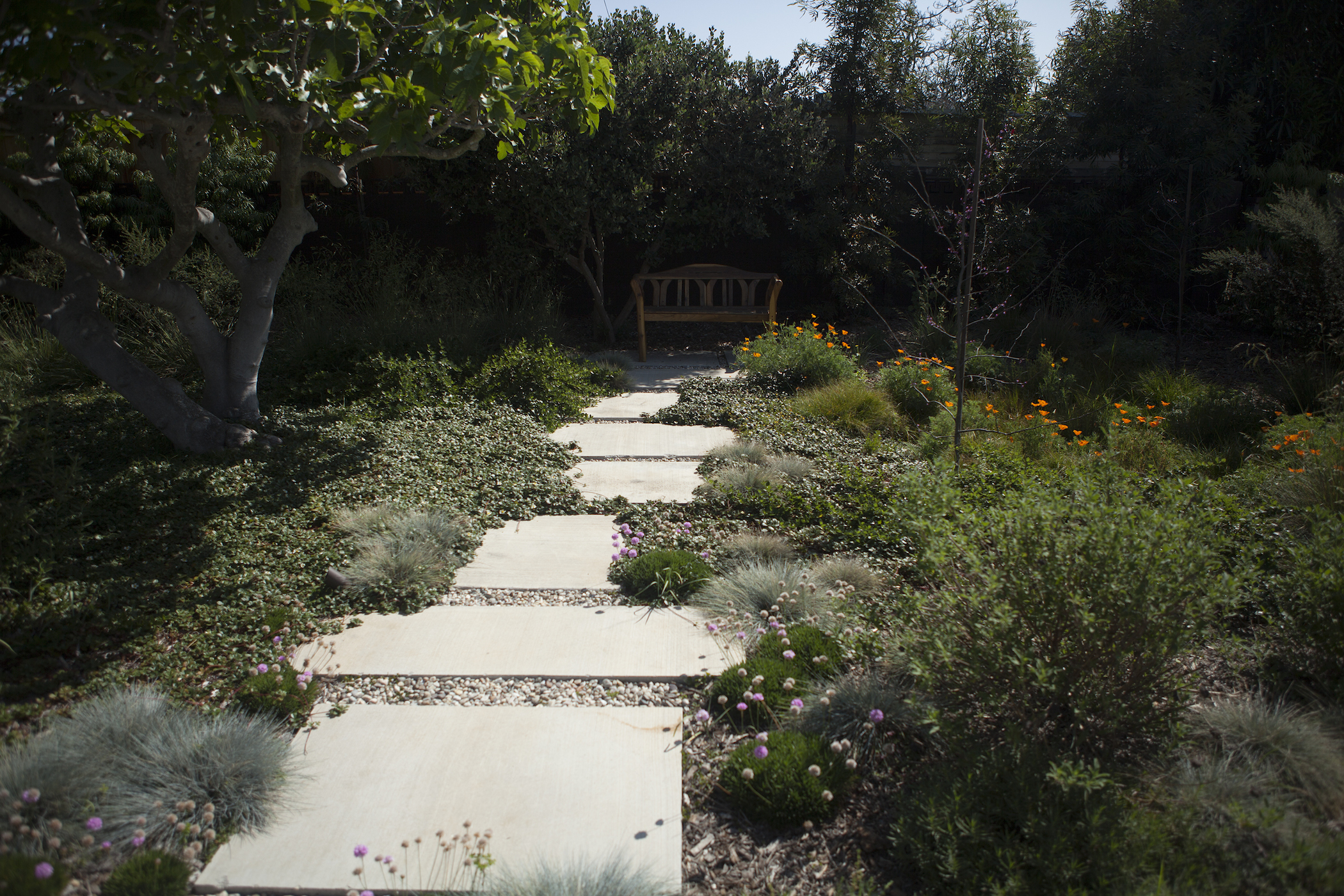
After learning about the problems with traditional landscapes, then reading about really good and cool Ocean Friendly Gardens (OFG) in San Diego, Calif. and Wilmington, N.C., I hope you are inspired to create your own OFG! You can break it down into four steps. Think of it as a recipe for making a meal for dinner. The following steps include information from a great how-to guide created by our partner, G3/Green Gardens Group, for Los Angeles County.
(All resources are linked on the OFG homepage.)
 1. Evaluate your site and make a plan
1. Evaluate your site and make a plan
Before you run out to buy plants, take time to walk around your landscapte to see the pattern of the sun, where rainwater would flow and any existing irrigation. Then click here to make a site plan.
2. Remove grass and create a streambed
Please do no use herbicides to remove the grass. Instead, use a sod (lawn) cutter. A sod cutter blade cuts the grass and makes it easy for you to peel it back, roll it up and remove it. You can rent one at your local hardware store or big box store. Then pull any remaining grass roots by hand, helping to nudge them out with a trowel.
 This is a good to determine if you soil is compacted. Dig a hole about one foot deep, fill with water, and see if it drains in 1/2 an hour. If not, you will need to manually loosen the soil such as with a pitchfork. While you are at it, check your soil type. Click here for a guide.
This is a good to determine if you soil is compacted. Dig a hole about one foot deep, fill with water, and see if it drains in 1/2 an hour. If not, you will need to manually loosen the soil such as with a pitchfork. While you are at it, check your soil type. Click here for a guide.
Once you remove the grass, it is time to shape and create a path for rainwater to flow into your garden. Like the three R’s of waste management – Reduce, Reuse, Recycle – we apply the three S’s for collecting and absorbing rainwater: slow it, spread it and sink it. The “s” shape of a natural stream applies these three S's in its curves, low spots, and things that get in the way of water (plants, mulch and rocks). Mimic nature by directing the rainwater from your raingutter downspout into a dry streambed that leads to a basin or low spot. Some refer to this as a rain garden. Click here for a simple recipe to create a basin/rain garden.
 3. Build soil health by sheet mulching
3. Build soil health by sheet mulching
Compacted soil prevents air and water flow, essential for soil microbes to survive. So you need to rebuild soil health. Click here for a recipe on sheet mulching, or layering materials - and the essential steps are listed here:
- Restore soil life by appying compost, compost tea or worm poop.
- Apply a layer of contractors paper to block sunlight from re-sparking photosynthesis by any remaining grass roots. Wet the paper so it is easy for the microbes to start eating it.
- Lay down 1-inch of mulch and wet it to help keep the paper moist.
- Lay down another 3 inches of mulch.
 4. Put in plants
4. Put in plants
Now you are ready to plant. Click here for a recipe to successfully installing a plant.
Your garden is set to absorb rainwater for plants to tap during dry months, filter pollution and prevent flooding, and hold onto carbon from carbon dioxide! For more information about how gardens do all these things, click here for a blog post about the 2015 Soil In The City conference.
Become an OFG ambassador on your street. Wheather it's volunteer with your local Surfrider chapter or applying our methods!